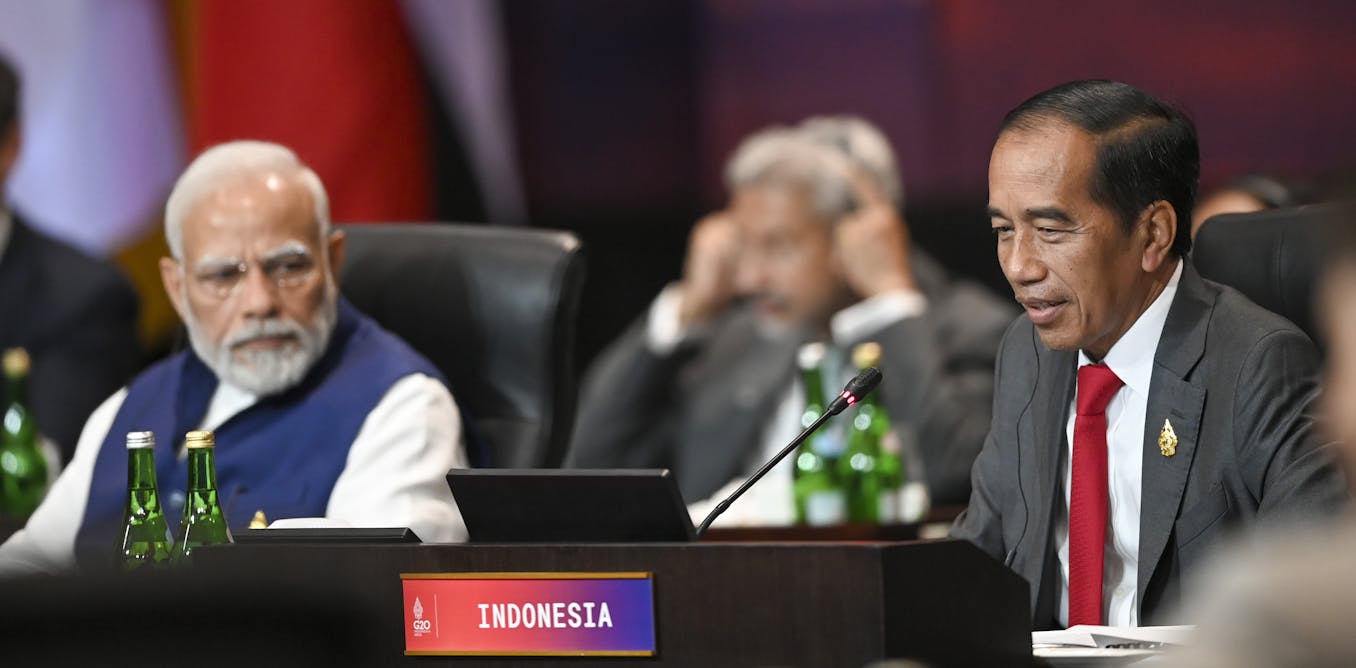
The G20 pandemic fund – and how Indonesia plays a key role in it
One major achievement during this year’s G20 Summit was the establishment of a global fund dedicated to the prevention and containment of future pandemic threats.
Indonesia, as the host of the G20 summit which has a solid track record in global health diplomacy, can play roles in ensuring and securing that the pandemic fund can be put to good use. Initially called the Financial Intermediary Fund (FIF) for Pandemic Prevention, Preparedness and Response (PPR), the pandemic fund was launched on November 13.
The initial total fund amounted to US$1.4 billion, contributed by a state grouping including Australia, Canada, the European Union, France, Germany, China, India, Indonesia, Italy, Japan, South Korea, New Zealand, Norway, South Africa, Singapore, the United Kingdom, Spain, the United States and the United Arab Emirates and three philanthropic organisations (the Bill & Melinda Gates Foundation, the Rockefeller Foundation, and Wellcome Trust).
Indonesia contributed around US$50 million while the United States (US) pledged US$450 million or almost one third of the total fund.
Looking at these numbers and the hype surrounding it, what exactly is a pandemic fund and what role does Indonesia play in it as this year’s G20 host country?
Establishing the pandemic fund
The pandemic fund was originally proposed during the Italian G20 presidency in 2021. No formal agreements were made at that time, except within the Rome leaders’ statement where G20 leaders acknowledged that “financing for pandemic prevention, preparedness and response has to become more adequate, more sustainable and better coordinated”.
During Indonesia’s G20 presidency, this financing issue was raised again, particularly since Indonesia proposed global health architecture as one of its priority issues. The need for a pandemic fund was based on the experience of low and middle-income countries who struggled to finance their healthcare systems during the COVID-19 outbreak.
Shortage of funding creates systemic risks as global connectivity enables easier transmission of diseases across borders. This situation led to discussions regarding a specialised pooled fund, designed for pandemic prevention, preparedness and response (PPR).
The WHO and the Word Bank estimate that the pandemic fund should set out to meet at least US$10.5 billion annual budget to be able to support equitable global access to vaccines, testing and therapies, global surveillance, research and development, manufacturing and health system strengthening.
This is the amount that the pandemic fund expects to cover.
How does the pandemic fund works?
In essence, we secure the pandemic fund money from donors to be distributed to low and middle-income countries for various purposes. This includes disease surveillance, capacity building for critical health workforce, establishment of laboratories and emergency communication.
However, an intermediary agent will distribute these funds and also implement projects. These implementing agencies include regional development banks such as Asia Development Bank, African Development Bank, and other international organisations.
The World Bank, WHO and a governing body consisting of countries, philanthropic foundations and civil society organisations manage the pandemic fund collectively. Membership within the governing body includes both donors and recipients – or called co-investors – to ensure inclusiveness and maintain equal decision-making power between states.
This governance model tends to replicate the Global Fund to Fight AIDS, Tuberculosis and Malaria (GFATM) and is a departure from the World Bank’s traditional decision-making model where countries obtain shares – and thus decision-making power – based on their economic contributions.
Indonesia’s health diplomacy
One major player in the establishment and management of the pandemic fund is Indonesia. It was among the first countries to pledge funds, and Indonesia also co-chairs the current governing body.
This is not surprising since within the last few years, Indonesia has been upping its game in health diplomacy. In 2021, Indonesia was elected as the co-chair for COVAX Advanced Market Commitment Engagement Group (COVAX AMC EG) – its main task is to ensure global vaccine equity. Indonesia also co-sponsors India and South Africa’s proposal for a TRIPS waiver – the temporary removal of certain provisions concerning intellectual property rights on the prevention, containment and treatment of COVID-19 disease.
In 2007, Indonesia withheld its H5N1 avian influenza samples due to the discontent that developing countries are providing samples for free and yet, pharmaceutical industries in developed countries are using it to develop patented products and charging low and middle-income countries for it. This led to a change in WHO policy, by which developing nations are given better access to influenza vaccines.
There are at least two major impediments in the pandemic fund that Indonesia can play a role in:
First, ensuring the sustainability of financial contributions.
The amount that has already been collected now is still far from the global target of US$10.5 billion per year. There is also a threat of discontinuity since a global recession is imminent. Furthermore, the fund’s grant only model may be less appealing to donors who expect to obtain financial returns on their money.
Second, balancing the fundraising. Indonesia can help ensure that money collected for the pandemic fund will not compromise the needs of other similar funds.
The fund may compete with other health financing institutions and hence, may reduce the overall benefit of global health financing scheme. Looking at the pandemic fund’s donor list, many of them are also donors in other health schemes such as the Global Fund. This led to the fear that their contributions to the Global Fund may be diverted to the pandemic fund.
A long-term assessment of the fund’s donation mechanisms to ensure sustainability of funding will also be required. This may include widening the scope of donors and stimulate larger and proportional participation by the private sectors.
This may seem challenging given the current state of the global economy, but clearly, we’ve faced harder tasks before. After all, during a global health crisis, no one is safe until everyone is, so the burden lies with all of us.
